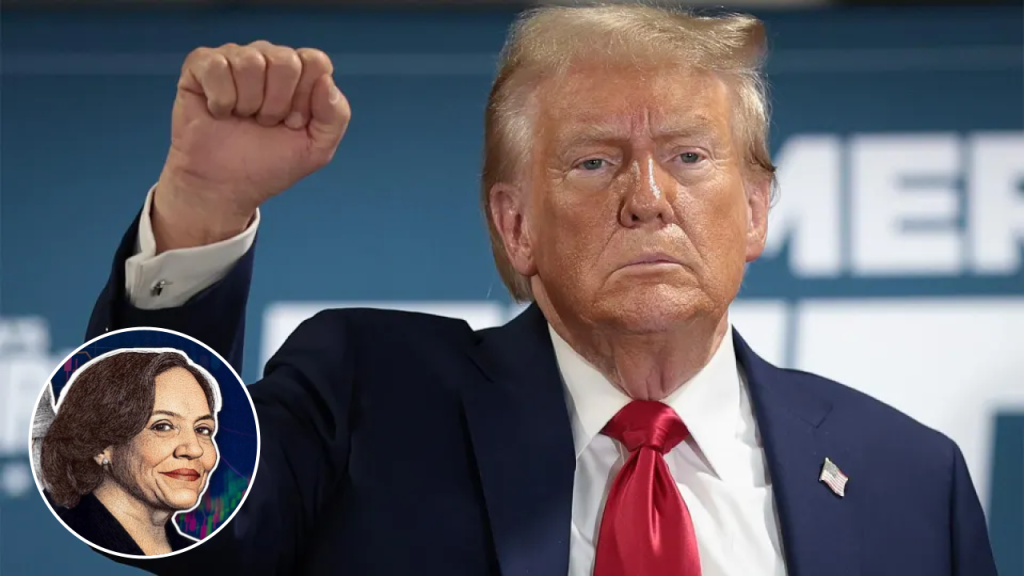
In the 2016 election, Donald Trump faced Hillary Clinton, who despite winning the popular vote, lost in the Electoral College, leading to Trump becoming the 45th President of the United States. In 2020, Trump lost his bid for a second term to Joe Biden in a highly contentious election that unfolded amid a global pandemic.
Donald Trump’s Opponents in the 2016 and 2020 Key Highlights
| Aspect | Details |
|---|---|
| 2016 Opponent | Hillary Clinton, former Secretary of State |
| 2016 Election Outcome | Trump won Electoral College: 304-227, lost popular vote by 2.8 million |
| 2020 Opponent | Joe Biden, former Vice President |
| 2020 Election Outcome | Biden won Electoral College: 306-232, won popular vote by 7 million |
| 2024 Campaign Focus | Trump’s third consecutive campaign against Kamala Harris |
Donald Trump, the 45th US President, has been involved in three consecutive election campaigns—winning in 2016 against Hillary Clinton, losing in 2020 to Joe Biden, and now running against Kamala Harris in 2024. This article explores the key issues, results, and the broader political landscape surrounding these elections, providing a detailed guide to the dynamics of Trump’s electoral history.
The 2016 Presidential Election: Trump vs. Clinton
Background of the 2016 Election
The 2016 US presidential election was one of the most polarized elections in recent American history. It featured Donald Trump, a real estate mogul and reality TV personality, running on the Republican ticket against former First Lady and Secretary of State Hillary Clinton, who was the Democratic candidate.
Trump’s campaign resonated with a large portion of the American electorate by tapping into feelings of discontent with the establishment. He promised to “Make America Great Again,” and focused on issues like reducing foreign intervention, toughening immigration laws, and restoring jobs in key manufacturing sectors.
On the other hand, Hillary Clinton had strong ties to Washington, and her campaign emphasized continuity, experience, and an inclusive platform designed to appeal to minority groups, women, and the middle class.
Key Issues in the Campaign
Trump’s campaign was characterized by unconventional rhetoric and a focus on anti-establishment themes. He blamed both major parties for overseas conflicts, stagnant wages, and the widening wealth gap in the country. His emphasis on tougher immigration laws, criticizing the North American Free Trade Agreement (NAFTA), and promises to “drain the swamp” of political corruption particularly resonated with white working-class voters.
Clinton’s campaign, on the other hand, focused on maintaining American leadership abroad, ensuring economic stability, and supporting marginalized groups. Her supporters saw her as someone who had the experience and knowledge to lead the country, and her campaign benefitted from substantial financial backing and superior organizational capabilities.
The Result
Despite almost every pre-election poll predicting an easy win for Hillary Clinton, Donald Trump won the Electoral College by a margin of 304 to 227. While Clinton won the popular vote by more than 2.8 million votes, Trump’s victories in key battleground states such as Wisconsin, Michigan, and Pennsylvania turned the tide in his favor.
Trump’s triumph was described by many analysts as one of the most shocking upsets in US political history. His appeal to disillusioned working-class voters outside major cities played a significant role in clinching the victory.
The 2020 Presidential Election: Trump vs. Biden
Background of the 2020 Election
The 2020 US presidential election took place in a much different context, as the country grappled with the COVID-19 pandemic. Donald Trump, now the incumbent President, faced Joe Biden, a former Vice President and a long-time fixture in Washington politics.
Biden’s campaign largely centered around opposing Trump’s handling of the pandemic and promises of unity, healing, and “restoring the soul of America.” Meanwhile, Trump emphasized his administration’s accomplishments, including tax cuts, the appointment of conservative judges, and deregulation.
Key Issues in the Campaign
COVID-19: The pandemic became the central focus of the election, with Biden criticizing Trump’s approach to controlling the virus, which by election day had killed more than 230,000 Americans. Trump, on the other hand, claimed his administration had taken necessary actions to mitigate the crisis, often downplaying the severity of the virus and promoting the rapid reopening of the economy.
Racial Justice: The summer of 2020 also saw widespread protests following the death of George Floyd, prompting a national reckoning on racial justice. Biden vowed to take measures to address systemic racism, while Trump maintained a law-and-order stance, which appealed to some voters but alienated others.
Mail-in Voting: Another contentious issue was mail-in voting, which became widely adopted due to the pandemic. Trump repeatedly claimed, without evidence, that widespread mail-in voting would lead to fraud, which caused significant tension both during and after the election.
The Result
Joe Biden won the popular vote by more than 7 million votes, securing 306 electoral votes compared to Trump’s 232. The result was historic in many respects—Biden received more votes than any presidential candidate in US history, and Kamala Harris became the first female, Black, and South Asian Vice President.
After the election, Donald Trump refused to concede, making baseless claims about widespread election fraud. His refusal to accept the results culminated in the storming of the US Capitol on January 6, 2021, by some of his supporters, in an attempt to stop the certification of Biden’s victory.
Trump’s 2024 Campaign
In 2024, Donald Trump is running once again for President, this time against Kamala Harris, the Democratic nominee. The political landscape in 2024 is vastly different from that of previous elections, with issues like inflation, immigration, and the influence of foreign powers on American affairs taking center stage.
Trump’s campaign continues to emphasize themes of populism, national sovereignty, and reducing the influence of what he describes as a corrupt political establishment. Harris, on the other hand, is campaigning on a platform of inclusivity, economic reform, and addressing climate change.
How Trump’s Past Campaigns Inform the 2024 Bid
- Learning from 2016: Trump’s success in 2016 was largely due to his anti-establishment stance and appeal to white working-class voters. In 2024, he is revisiting these themes, while also focusing on voters concerned about inflation and border security.
- Lessons from 2020: Trump’s loss in 2020 was partly attributed to dissatisfaction with his handling of the pandemic. His 2024 campaign is more focused on the economy, crime, and foreign policy, aiming to address issues that are of significant concern to the American public.
Frequently Asked Questions (FAQs)
Who Ran Against Donald Trump in 2016?
In the 2016 election, Donald Trump ran against Hillary Clinton, the former First Lady and Secretary of State. Clinton won the popular vote but lost the Electoral College, leading to Trump’s victory.
Who Defeated Donald Trump in the 2020 Election?
Donald Trump was defeated by Joe Biden in the 2020 election. Biden won both the popular vote by more than 7 million votes and the Electoral College by 306 to 232 votes.
What Were the Key Issues in the 2016 Election?
Key issues in 2016 included immigration, economic disparity, political corruption, and foreign intervention. Trump’s anti-establishment rhetoric resonated with many disillusioned voters.
What Role Did the Pandemic Play in the 2020 Election?
The COVID-19 pandemic played a crucial role in the 2020 election, highlighting the differences in how Trump and Biden planned to handle the crisis. Biden focused on public health and safety, while Trump pushed for a rapid reopening of the economy.
Who is Donald Trump Running Against in 2024?
In 2024, Donald Trump is running against Kamala Harris, the Democratic candidate and current Vice President of the United States.
Conclusion
The 2016 and 2020 US presidential elections were pivotal moments in American history, marked by polarization, unexpected results, and intense public interest. Donald Trump’s rise to power in 2016 was fueled by his anti-establishment rhetoric, while his loss in 2020 was significantly influenced by his handling of the COVID-19 pandemic and rising social tensions. As Trump campaigns for a potential second term in 2024, it remains to be seen how his strategies and the evolving political climate will shape his path.

